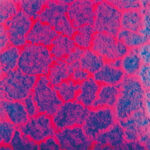The Colours of Small Gauge Cinema

This year we present a rough guide through the developments and usages of colours in small-gauge filmmaking. The journey starts with tinted 16mm vintage prints from the 1920s and continues in the 1930s with amateur films. Thanks to lenticular colour motion picture processes like Kodacolor and monopack multilayer films like Kodachrome, colour became surprisingly more common in small-gauge cinema compared to commercial films made in 35mm.
After the Second World War, colour film stock became also very popular in promotional and industrial films. From the 1970s onwards, colour in film had become an everyday phenomenon and no longer grabbed the attention of spectators like before. This might be an explanation why more and more innovative filmmakers like Bill Brand, Arthur and Corinne Cantrill and Christian Lebrat started to experiment with the possibilities of film colour to make them visible again.





